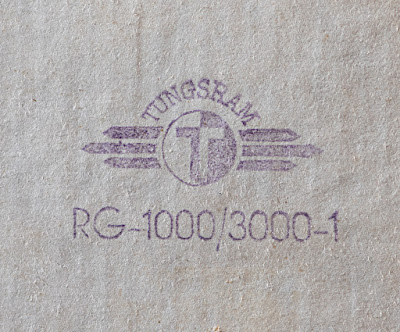Hi!
Let's start the new year with a big mercury vapour rectifier tube. Meet the mighty 872A.
The 872A is a transmitting tube. It was developed for radio transmitters and industrial purposes. Above a photo of a JAN-872A made for the army by
General Electric, with the military designation VT-42A.

The 872A is a half wave rectifier, which means it is a single diode. It comes on a Jumbo 4-Pin base and has a Medium size top cap. The filament operates at 5V and consumes a hefty 7.5A. This results in a current delivery capability of up to 1.25A per tube and it can withstand peak inverse voltages up to 10kV. Not your usual measly receiving style rectifier but a serious beast. For a comprehensive list of technical parameters, see the
RCA data sheet. Being a mercury vapour tube the 872A requires some precautions when used. The filament needs to be warmed in advance to allow the mercury to vaporise and recondense at the bottom before high voltage is applied to the plate. Especially when first turned on this should be done for 30 minutes to make sure no residual mercury may cause a short. Once properly conditioned for the first time about a minute is sufficient. Besides the high current capability the 872A offers a low voltage drop of 10V wich remains largely constant with current draw.
The glass bulb has a similar size and same base as a 211 or 845. And the tube gives off an eerie blue glow in operation.
Before we look at some different samples, lets go through some application examples, starting with a simple full wave rectification scheme using two of the tubes.
This is your usual power supply as is used in most tube amplifiers. The plates are fed from a high voltage secondary with the centre tap connected to ground. The two tubes can be heated from a single winding which of course needs to be able to deliver a current of 15A for both together. The high voltage is taken off the meter tap of the filament winding and from there is fed to the filter. Up to 2.5A of DC can be obtained from this set up and more than 3kV DC. Quite impressive. But more is possible.
Twice the voltage can be reached with the use of 4 tubes in a full wave bridge arrangement. Draw back is the need for 3 separate heater windings, which must be extremely well isolated from each other. If even more current is needed, a 3-phase power supply is the way to go.
Above the circuit of a 3-phase bridge rectifier with 6 872A. This circuit can deliver a frightening 9600V at 3.75A. Each tube is heated from a separate heater winding. The heater windings are connected such that high voltage at the plate and heater voltage are from different phases, to minimise peak current in the filament. And lastly a 3-phase parallel arrangement which is the 3-phase equivalent to the first circuit above.
This can only deliver half the voltage compared to the bridge arrangement but double the current, which results in 4800V at 7.5A. Clearly way above what is usually needed in even the most powerful audio amplifiers.
There are more configurations possible, but these are the most important ones.
Here we see a
RCA 872A and it's box.
This one contains a lot of mercury
The tube in operation, first only with the filament warming up
And then with high voltage applied, low current draw:
Increasing the current:
Full current draw:
From a different angle:
The General Electric 872A also contains copious amounts of mercury:
Next we have a Cetron 872A
And lastly a Tungsram tube, with the european designation RG-1000/3000, which is equivalent to 872A
Lets light this one up
As the filament warms up, the mercury evaporates and condenses on the glass
Applying plate voltage at very little current draw which results in a very faint blue glow:
Increased current:
More glow pics:
What an impressive tube!
Best regards
Thomas





































































